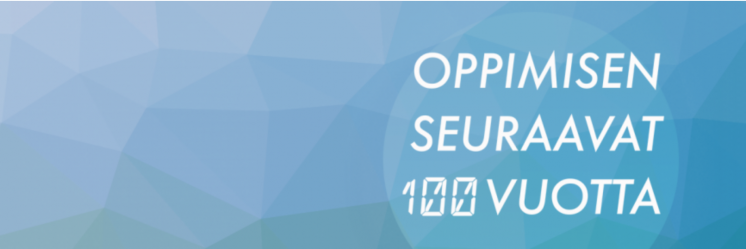Learning analytics for the student

Authors: Markus Torkkeli & Esa Salmio
Aalto University has 17 500 students altogether. Each student interacts with the university in various ways. This interaction – whether using the library, studying in a learning environment or watching a video – leaves behind a trail of data and creates a digital footprint. As a result of digitalisation, more and more data about studying and teaching will be acquired. We have started to realise that this data can help us to provide better services, support students and teachers, and improve teaching and learning.
Most of the learning-related data that helps student to follow their daily study progress is produced in a learning environment. This means that the teacher is in a key role to decide what type of learning analytics we can have. When creating an assignment or giving feedback, the teacher has the power to use all kinds of systems, but the university gets information only from its own systems. The key to obtaining high quality information for teaching and learning is to use the systems that we can get the information from, and to make sure that we use the systems as they are meant to be used.
One example are assessments. In a digitalised world, we can learn a lot from them, such as what went wrong with a test, where did a student hesitate before answering a question, and what kind of assessments did the student get from different teachers. In some cases, we can provide students with immediate feedback.
With the data collected from assessments, we can help the student to understand what kind of learner he/she is and maybe even make systems to create alerts based on behaviour. For example, if a student is always turning in an assignment at the last minute and his/her grades are not that good, the system could simply send a reminder well ahead of the deadline and help the student to start working a bit earlier.
During the year Aalto University has started several new initiatives and development projects related to learning analytics. For us in Learning Services (LES) the most important implication of learning analytics in line with our mission is to provide relevant information to the individual student. Help him/her to make the right choices about studies and to help us understand more about him/her as a learner. We think this is what university teaching is all about – helping talented individuals to know more about life, the world and themselves.
We know, however, that learning analytics benefits teaching and management as well. Since learning analytics is a complex issue and has multiple aspects to consider, we have formed a learning analytics coordination group to create mutual understanding of its possibilities and to discuss how Aalto University should implement analytics in everyday life.
All in all, when creating an environment for learning analytics we need to understand that the reports and analytics the system can give us are only based on the data we are willing to give it. At the moment, most of this data is scattered throughout different systems and has little meaning in everyday life. But we believe that if we collect this data and make it intelligible, meaningful patterns may emerge with the potential to help students know more about themselves and become better learners.
